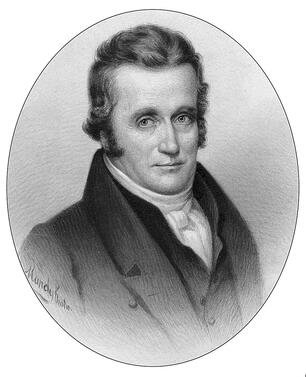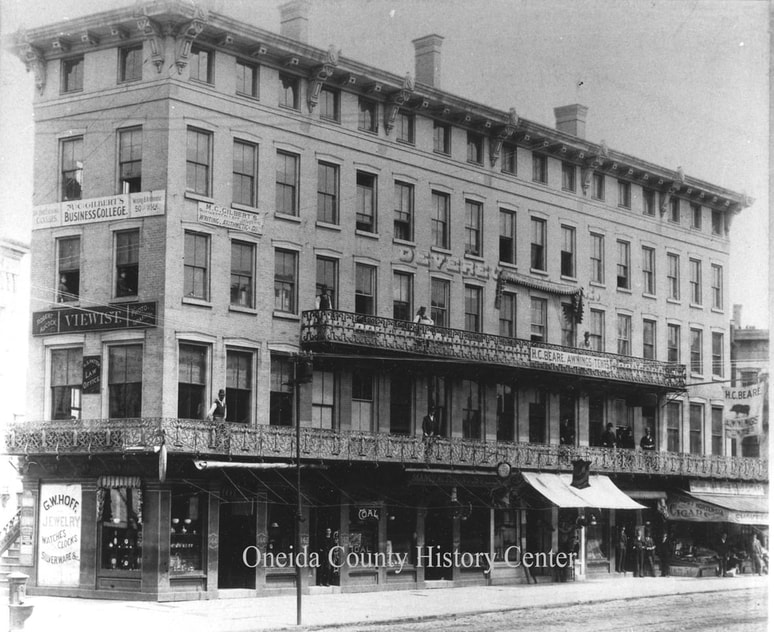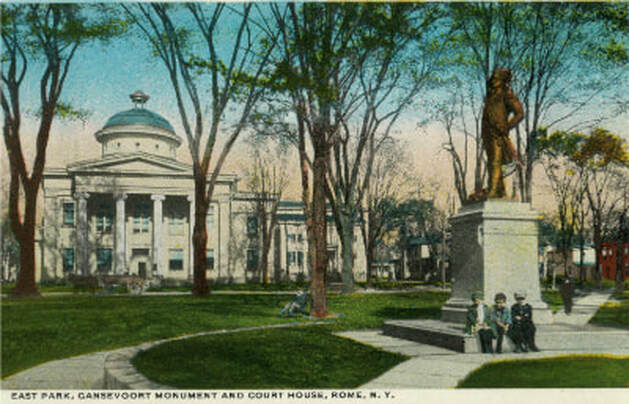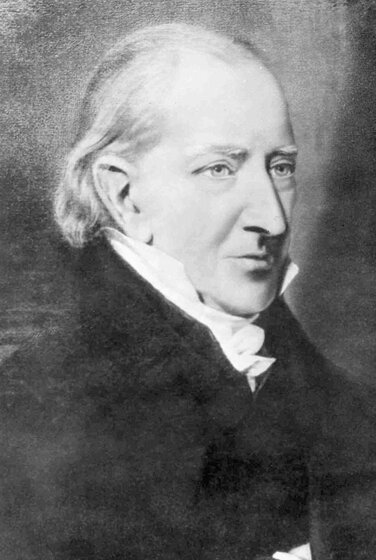|
On August 6, 1777, the day General Nicholas Herkimer took a bullet in his knee at the Battle of Oriskany, a little boy in Co. Wexford, in the southern part of Ireland, had just celebrated his third birthday in style at his family’s estate near Enniscorthy. Of course, young John C. Devereux knew nothing of the revolution raging in a land across the ocean. He couldn’t have foreseen the rebellion that would drive him from his home nor the effect he would have on that far away valley Herkimer fought to set free. Twenty years later, Devereux stepped on to a dock in New York, forced to flee Ireland after his activities on behalf of the United Irishmen were discovered. Only a year later, during the Rebellion of 1798, his family, who stayed to finish the fight, lost all their wealth and even the life of one son, James, at the Battle of Vinegar Hill. But safe in the States, teaching dancing for a living, John made his way from New York through New England to Utica in 1802. There he traded his minuets for merchandise and succeeded beyond his dreams. The supply and demand of selling dry goods and groceries in a booming frontier city, together with his industrious habits, polished manners, and kind generosity brought him $100,000 a year. His surviving brothers joined him in this new nation and in 1814 Nicholas, the youngest, became John’s business partner. Together they built the Devereux Block on the west side of Bagg’s Square in downtown Utica, a grand five-story building with stores on the first floor and offices above. It stood until 1990 when it was razed after a fire. Their neighbors admired their success and asked them for sage advice regarding money. At the time, Utica had no bank but the Devereuxs had a strongbox at the store which they offered as a safe place to keep the coins of Uticans. They kept careful accounts and paid interest to depositors. Then in 1839 they officially formed the Savings Bank of Utica. John served as its first president. And the strongbox survives in the gold dome bank's lobby on Genesee Street to this day. There were other firsts too. John donated the funds to build the first Roman Catholic Church west of Albany - Old St. John’s, still at Bleecker and John Streets today. And he established Utica’s first St. Patrick’s Day parade in 1824, still celebrated on Genesee Street every March. And in 1840, John C. Devereux became the first mayor of Utica elected by the citizens. Up to then, Utica’s mayors had been appointed by the city council. On December 11, 1848, John finished his generous and productive life in the city he served so well. Moses M. Bagg later wrote of him, “...a very prince among his fellows was John C. Devereux whose honourable career and many deeds of charity left behind him a memory as verdant as that of the green isle whence he came."
0 Comments
The city that is Rome, NY, today was nothing but an abandoned fort, a swamp, and a lot of potential when Irish-born Dominick Lynch mapped out his vision for the community in 1796. Over the next 29 years he built up a thriving town he called Lynchville, criss-crossed by streets he named after his friends and family. Those familiar street names include, James, Jasper, Louisa, Ann, John, and Henry (after some of his 13 children), Dominick and Lynch (after himself), and George and Washington (after his friend the Father of our Country). Lynch had the honor of attending George Washington’s inaugural ball in 1789 having become acquainted with him when they were neighbors in New York City.
One of the first Irishmen to arrive in the Mohawk Valley would go on to become one of the richest and most powerful men in colonial America. He was Sir William Johnson. Born in Co. Meath, he traveled to New York in 1737 at the age of 22. His uncle Peter Warren had hired him to lead a band of 12 Irish families to establish a community on his land near present-day Warrensburgh. Quickly Johnson began to build his fortune through the fur trade and land acquisition. In 1755 Johnson distinguished himself at the Battle of Lake George, which earned him the title of Baronet from King George II of England. (This title has passed down to his descendants to this day. The current Baronet of New York lives in London.) But more than his growing wealth or his title, it was his extraordinary ability to communicate with the Native Americans that made him a legend of colonial New York. He learned to speak the Mohawk language, had eight children with his Mohawk wife, and was given a name of honor by the Mohawks - “Warraghiyagey” - which in English means, "a man who undertakes great things". Johnson Hall, his home that still stands in present-day Johnstown, NY, was a place known for generous hospitality with plenty of music and dancing, fine food and drink, a menagerie of pets including dogs, birds, and monkeys, and rooms to accommodate a constant stream of guests. Johnson died from a stroke while speaking at an Indian conference at his home on July 11, 1774. He left an estate of 170,000 acres of land. Just two years later, his heir, Sir John Johnson, lost it all when American patriots seized it during the Revolutionary War. The marks are still visible on the stairway railing where patriot militia members pounded their rifle butts on the day they took the house. Photos taken by Sue Romero at Johnson Hall State Historic Site. |
AuthorThe Craobh Dugan-O'Looney blog is written by Sue Smith Romero. Questions? Corrections? Send them on to her at [email protected] Categories
All
|





 RSS Feed
RSS Feed